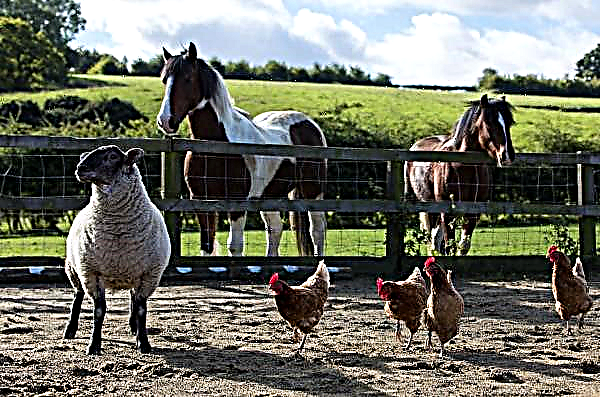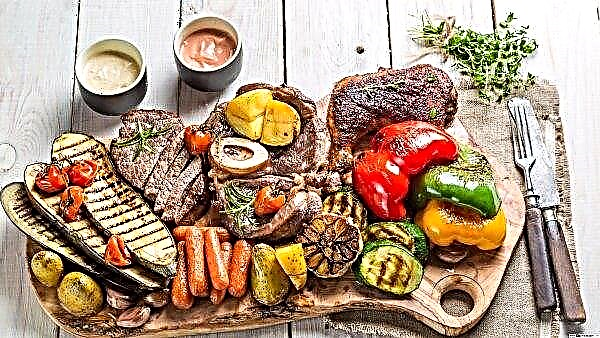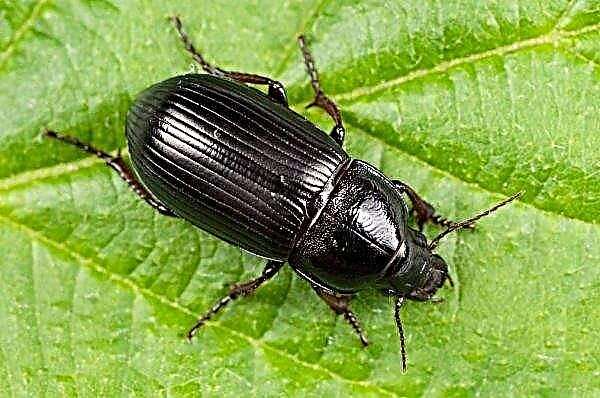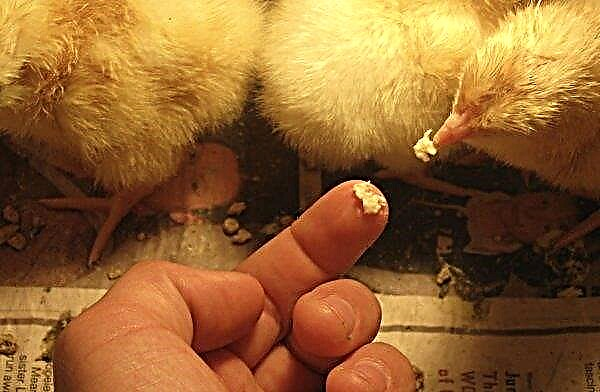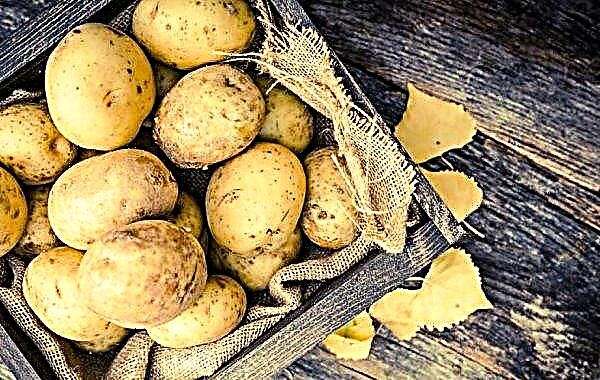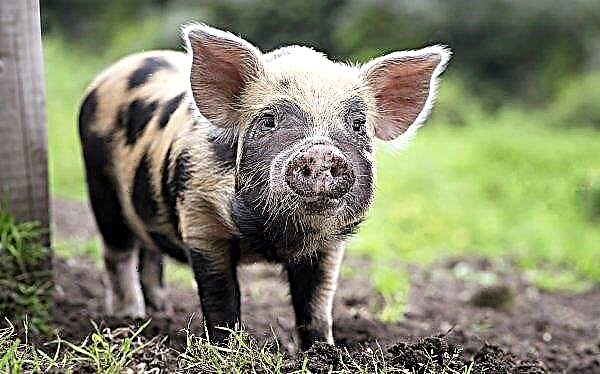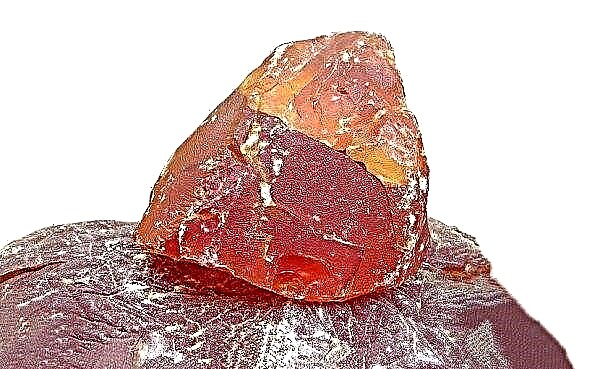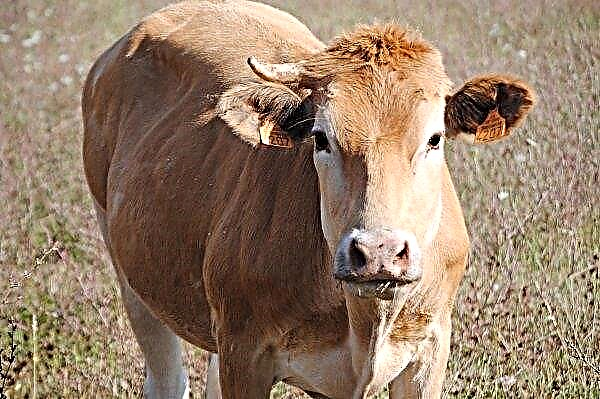Even the creation of ideal conditions of keeping and food quality control cannot give a 100% guarantee that pigs will not get viral infections. One of the viruses that can destroy most of the stock in a short time is Aujeszky, or false rabies. How to deal with the disease, and does the Aujeszky vaccine help preserve the health of young animals, read below.
Description of the disease
The disease proceeds in an acute form. It is provoked by damage to the central nervous system. It is accompanied by severe itching in all animals except fur and pigs. Piglets provoke cramps, paralysis, ultimately leading to death. In adults, it proceeds under the guise of a fever.
In pigs, a virus infection provokes dysfunctions in the lungs, gastrointestinal tract and much less central nervous system. The disease always proceeds in a severe form and almost always causes the death of animals.
The disease is characterized by stationarity. A clear seasonality is not pronounced, but more often outbreaks occur in spring and autumn. Animals have been sick for several years.
Important! Individuals who have had Aujeszky’s disease cannot be used for procreation. Pigs can remain carriers of the virus from 140 days to 6 months, which is sure to be passed on to offspring.
History of occurrence
The first to qualify the disease in 1902 was Aladar Aujeszky. The discovery was confirmed by two more Hungarian scientists who described the manifestations of the disease in cats and dogs. In Russia, the first notes on the spread of the disease were made in 1909–1911. in cattle, later - in 1915, manifestations were noted in sheep.
Spread
Today, the disease is ubiquitous. Outbreaks can be recorded even in the most favorable regions.
In pig farms, the virus spreads in 8-10 days, affecting up to 80% of the livestock. In some cases, the degree of damage to livestock reaches 100%. Among pigs, Aujeszky most often infected pregnant females and young animals up to 4 months. Boars are infected much less frequently, and their recovery process is easier.
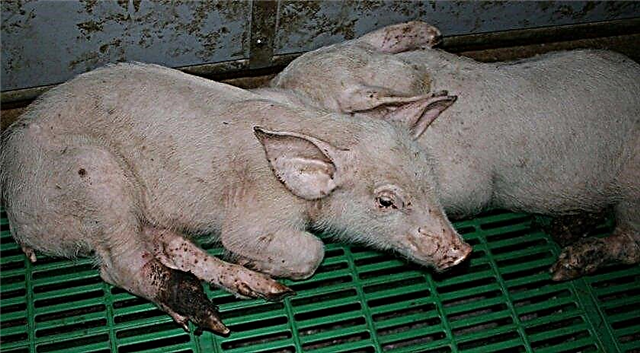
Flow forms
Aujeszky can occur in several forms, depending on the degree of damage to internal systems and organs:
- Epileptic - provoked by damage to the central nervous system. It is accompanied by swelling of the eyelids, dilated pupils, increased salivation and lacrimation, blindness. This form is characterized by a severe pain syndrome. When touching the skin, the animals begin to squeal, often until the voice is completely lost.
- Thunderless - The main characteristic feature of this form is a decrease in pig mobility. Usually animals spend more time standing against the wall, leaning on it with their nose. Gait uncertain. Convulsive muscle contraction in the neck can be observed, which is accompanied by a change in the position of the head, tipping it up. From the lungs and gastrointestinal tract, pneumonia, bloody bowel movements are observed.
- Mixed - the form combines the manifestations of both of the above.
- Pulmonary - accompanied by fever and all the characteristic signs of a cold.
- Gastrointestinal - observed least often. Accompanied by bloody diarrhea, severe weight loss, dehydration, vomiting.
Important! Weekly piglets infected with Aujeszky's disease lose their sucking reflex. The death of babies occurs in 100% of cases.
Causes of the disease
More often, the virus enters pig farms with rodents and other animals infected with the disease, and is also transmitted by parasite insects (lice, fleas). The causative agent is a DNA-containing virus that builds into the cells of an animal’s DNA and begins to make its own changes. As a result, the body works against itself. The virus is able to persist for a long time in hay, water. Resistant to cold and susceptible to heat. When the air temperature rises to +50 ... + 60 ° С, it instantly dies. Also, bright light, solutions of chlorine, formaldehyde, caustic soda are harmful to the virus.
The virus is transmitted to piglets from infected females during passage through the birth canal and when breast milk is fed.
So far, it has not been possible to find out the real causes of the outbreaks. Presumably, the virus infects individuals whose immunity is reduced. Nevertheless, the disease often begins to progress in favorable farms.
Symptoms and signs of the disease
Most often, the precursor of the disease is the death of cats, dogs and rodents on the farm. When infected with a livestock of pigs, rats abruptly leave their homes and migrate to a safer place.
The virus enters the body of animals through the respiratory tract and oral mucosa. From there, seeping through the walls of blood vessels into the blood, the virus spreads throughout the body. After the virus enters the body, the incubation period lasts 2–20 days. During this time, the virus spreads throughout the body and accumulates in certain areas - the central nervous system, gastrointestinal tract, blood vessels and mucous membranes.
Signs and symptoms of the disease will vary in pigs of different ages.
So the main signs of illness in young animals from the first day of life to 3 weeks are:
- increase in body temperature to + 42 ° C in the first few days;
- lack of sucking reflex;
- increased separation of saliva, mucus from the nasal passages, lacrimation.
If young animals are vaccinated, the symptomatic picture of infection is absent.
Piglets between the ages of 1 to 4 days carry the disease most difficult.Did you know? Pigs are effective exterminators of snakes - they trample reptiles, and then eat them. This feature was successfully used by most farmers in America when the number of snakes began to increase dramatically.
They have observed:
- paresis of the pharynx and facial muscles;
- paralysis of limbs;
- convulsive muscle contractions of the whole body;
- chills;
- lack of appetite;
- signs of a cold.
In adults, the main symptom is not itching, as in other animals, but fever and damage to the central nervous system. Most often manifests itself as an increase or decrease in excitability, as well as throat spasms.
Diagnostic Methods
The death of individuals suffering from a severe form of the disease occurs on the 3rd day. The bodies of animals are the subject of a pathoanatomical analysis, on the basis of which a final diagnosis is made. The main subject of research is the brain, lungs, liver and spleen. It is in these organs that the highest concentration of viral cells is observed.
The purpose of such analyzes is to differentiate Aujeszky from diseases with similar symptoms:
- true rabies;
- swine flu;
- pork plague;
- infections of different origin.
In living individuals, the disease is diagnosed by clinical signs and analyzes of mucus secreted from the nose and mouth. In the presence of combed areas on the body of the animal, they also take a scraping, and diagnose the presence of the virus in the body.
Disease treatment
There are no specific effective measures to eliminate the disease. The only effective method is prevention through vaccination of the entire livestock of pigs and other inhabitants of the farm.
During treatment, the main task is to optimize the functioning of the immune system and restore the functionality of the central nervous system.
In treatment, protein therapy can be used. Manipulation involves the introduction of blood from healthy animals to patients. So, vaccination can be carried out with the blood of a healthy horse or cow.
Treatment of the disease also includes compliance with sanitary standards. First of all, quarantine is imposed on the entire farm. The walls of the rooms and floors, if the opportunity allows, are treated with a blowtorch. Then washed with chlorine or caustic soda. The entire litter is disposed of by burning. Watering troughs and septum feeders are also subject to chlorine treatment. After airing the animals returned to the barn.
During the quarantine period it is forbidden to import and export animals, mating, clipping and tattooing. Manure of sick individuals and in the quarantine zone should be biothermized. In addition, it is necessary to carry out the destruction of stray animals, rats and mice. Quarantine is removed no earlier than 30 days after the disappearance of symptoms in all animals.
Did you know? Contrary to the stereotype, a pig is a fairly clean animal. She will not defecate where she sleeps or eats, but will look for a separate angle for this.
Pharmacy products
Most of the pharmacy drugs use immunomodulators and broad-spectrum antibiotics to eliminate the symptoms of the pulmonary system, as well as vitamin preparations in injections.
Specific gamma globulin 10% is administered in the following dosage, depending on the age of the pigs:
- up to 1 month - 8-12 ml;
- 1-2 months - 12-18 ml;
- from 2 months - 24-30 ml;
- adults - 40-50 ml.
Of the antibiotics, penicillin group preparations are used. Penicillin and bicillin are administered intramuscularly. A single dose for an adult is 6,000-8,000 units / kg body weight, young animals - 8,000 units / kg body weight. The course of treatment is 7 days, in severe cases, the time increases in accordance with the appointment of a veterinarian. The drug is diluted in distilled water or in a 0.5% solution of novocaine. The analgesic effect of novocaine allows you to extend the effect of the main drug.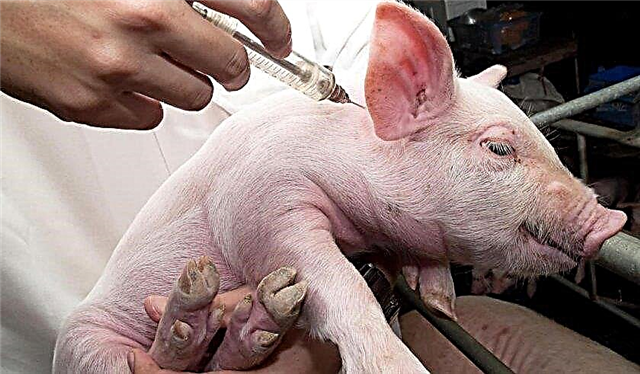
High efficiency is shown by treatment with a complex of drugs:
- gamma globulin;
- hydrochloride;
- bicillin.
A quick cure occurs when three drugs are administered simultaneously in the first hours after the detection of the disease.
From vitamin complexes, preparations containing vitamins of groups B, A and D are used.
Folk remedies
From folk remedies, it is allowed to use decoctions of herbs. They help increase the body's resistance and eliminate toxins. They are used to feed animals.
Did you know? The pig does not sweat - there are too few sweat glands on its body to be able to completely cool its body. To reduce body temperature, the pig is immersed in dirt.
The highest efficiency is shown by soldering in the following collection:
- tansy;
- St. John's wort
- nettle.
All ingredients are mixed in equal amounts. 10 l of water will require 3 kg of raw materials. All ingredients are boiled in water for 15 minutes. Then insist 10 hours and strain. After that, the concentrate is diluted with 10 l of water.
Active disease prevention
As active prophylaxis, vaccination of animals with the STI vaccine is used.
The schedule of preventive vaccination in accordance with age and the dosage of the drug in a solution of 1:50:
- piglets 2-15 days - 0.5 ml first, after 20 days 1 ml;
- piglets 16-60 days - 1 ml, after 20 days 2 ml;
- weaning 2-3 months - 2 ml, after 20 days 2 ml;
- 3–6 months - 2 ml; after 20 days, 2 ml;
- adults and pregnant sows - 2 ml after 20 days 2 ml.

In addition to vaccination, the following activities are active prevention:
- frequent litter change with high-quality subsequent disinfection of rooms and all equipment with chlorine;
- regular inspection of the livestock by a veterinarian in order to identify infected individuals in the early stages;
- feeding with specialized feed intended for different age categories;
- the introduction of vitamin complexes.
Did you know? Pig blood is close in composition to human. In connection with this feature, animals are used not only for meat, but also in transplantology, and pig’s gastric juice is used in the production of insulin.
Aujeszky's disease is a dangerous DNA virus that spreads rapidly and can infect up to 100% of the livestock. When a disease is detected, it is necessary to quickly organize a quarantine zone and take measures to save animals in a short time, using all possible methods. There is no effective treatment for the disease today, so the only possible option is to vaccinate young animals after birth.


